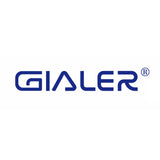In the realm of Radio Frequency Identification (RFID), two key players vie for attention: RFID cards and tags. While they share the common goal of identification and tracking, their nuances run deep. Let’s embark on a thorough analysis of their disparities, explore their individual functionalities, and uncover strategies for leveraging them interchangeably.
Understanding the Divide
RFID Cards and Tags diverge primarily in their form factors and applications:
RFID Cards: These bear a striking resemblance to conventional credit or debit cards, boasting a sleek, rectangular design. Suited for scenarios requiring card-like objects, they find their niche in access control, identification badges, and cashless transactions.
RFID Tags: Unlike their card counterparts, RFID tags come in an array of shapes and sizes, from minuscule microchips to larger stickers or labels. Their versatility shines in applications spanning asset tracking, inventory management, and supply chain optimization, thanks to their capacity for attachment to diverse surfaces or objects.
Harnessing the Power
Both RFID cards and tags operate on the principle of wireless communication with an RFID reader, yet their application-specific configurations warrant consideration:
When an RFID card or tag enters the electromagnetic field emitted by an RFID reader, it draws power from the reader's signal. This energy activates the RFID chip within the card or tag, prompting it to transmit its unique identification data back to the reader via radio waves. The reader captures this information, enabling seamless identification and tracking of the associated object.
Strategies for Interchangeability
While each excels in its respective domain, there are instances where RFID cards and tags can substitute for one another:
-
RFID Cards in lieu of Tags: When the situation demands a card-like form factor for identification or access control, RFID cards step up. They seamlessly integrate into existing card reader systems, making them ideal substitutes for scenarios requiring such interfaces.
-
Tags in lieu of Cards: Conversely, RFID tags offer flexibility and adaptability, making them viable alternatives to cards in certain contexts. When the need arises for non-conventional tagging or labeling, RFID tags shine. Their diverse shapes and attachment options cater to a myriad of applications, from asset tracking to supply chain optimization.
Striking a Balance
While RFID cards and tags possess distinct attributes, leveraging them interchangeably requires a balanced approach:
Consider the specific requirements of the application: Opt for RFID cards when traditional card-like objects are essential, and turn to RFID tags for scenarios demanding flexibility and adaptability.
Embrace innovation: Explore hybrid solutions that combine the strengths of RFID cards and tags to address multifaceted challenges effectively.
Stay informed: Keep abreast of advancements in RFID technology to harness emerging capabilities and drive continuous improvement.
Conclusion
RFID technology continues to redefine the landscape of identification and tracking, with RFID cards and tags standing as pillars of innovation. By deciphering their disparities, understanding their functionalities, and exploring strategies for interchangeability, organizations can unlock the full potential of RFID technology to streamline operations, bolster security, and drive efficiency across diverse domains.









